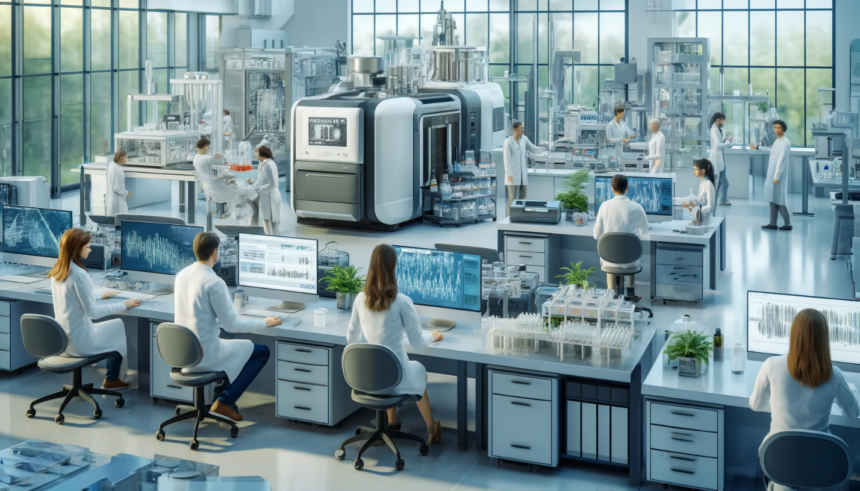Biospecimens serve as the cornerstone of modern medical research, offering unprecedented insights into the complex mechanisms of diseases and fostering the development of innovative therapies.
Biological materials such as tissues, blood, and other body fluids, are pivotal in the bridge between observational science and therapeutic application, particularly in the domains of personalized medicine and genetic research.
The Critical Role of Biospecimens
Biospecimens research has transformed our understanding of various diseases, particularly cancer, genetic disorders, and chronic conditions.
By examining these samples, researchers can uncover biomarkers that predict disease progression and response to treatments, facilitating a move towards more personalized healthcare strategies.
Biospecimens in Clinical Trials
In clinical trials, biospecimens are invaluable for validating the efficacy and safety of new therapeutic drugs and procedures, as they allow researchers to monitor the biological responses to treatments and understand the molecular underpinnings of drug resistance or success.
This information is critical for optimizing drug formulas and dosing, reducing potential side effects, and improving patient outcomes.
Biospecimens and Genetic Research
The study of genetic variations that contribute to diseases heavily relies on high-quality biospecimens.
Large-scale genomic studies, such as those conducted by biobanks, utilize biospecimens to map genetic mutations and their associations with various health conditions.
This research is essential for the development of targeted therapies and is a key component in the field of precision medicine.
Enrichments in Biospecimen Collection and Preservation
Advances in biotechnology have significantly improved the methods of biospecimen collection, preservation, and analysis.
Modern biobanks employ sophisticated cryopreservation techniques to ensure that cellular integrity is maintained over extended periods, allowing for longitudinal studies that can track disease progression or response to treatment over many years.
Standardization of Protocols
The standardization of collection and storage protocols across biobanks worldwide enhances the reproducibility of research findings and facilitates wider collaboration among scientists.
Standard operating procedures ensure that each biospecimen is handled in a manner that maximizes its utility for research while minimizing biological degradation.
Innovative Technologies in Biospecimen Analysis
As the field of biomedicine expands, so does the technology for analyzing biospecimens: cutting-edge techniques such as next-generation sequencing (NGS) and mass spectrometry have revolutionized our approach to molecular biology, allowing for more detailed and rapid analysis than ever before.
Next-Generation Sequencing (NGS)
NGS offers a comprehensive view of genomic data by allowing scientists to sequence DNA and RNA much more quickly and cheaply than older methods.
As a result, NGS has become a fundamental tool in identifying genetic mutations, understanding complex diseases, and developing targeted therapies that are precisely tailored to individual genetic profiles.
Mass Spectrometry in Proteomics
Mass spectrometry is another powerful tool that has heightened the analysis of proteins in biospecimens.
This technique helps identify and quantify thousands of proteins across different samples, providing insights into the biomolecular changes that occur in response to disease or treatment.
Mass spectrometry is crucial for biomarker discovery and the study of disease mechanisms at the proteomic level.
Microfluidics and Biosensor Technology
Microfluidics and biosensor technologies are also gaining traction in the field of biospecimen analysis – these technologies allow for the manipulation of small fluid volumes to achieve high-throughput screening and sensitive detection of biological markers.
Microfluidics, for instance, is particularly useful in cancer research for isolating circulating tumor cells from blood samples, which can provide critical information for cancer diagnosis and monitoring.
These technological advancements not only increase the quality and speed of research but also open new avenues for discoveries that were not possible a few years ago.
By leveraging these sophisticated analytical tools, researchers can delve deeper into the molecular underpinnings of diseases, paving the way for innovative treatments and diagnostics.
Ethical and Legal Considerations
The ethical dimensions of biospecimen research are complex and involve considerations around consent, privacy, and the rights of donors.
Legal frameworks guide the collection and use of biospecimens, ensuring that donor anonymity is maintained and that specimens are used in accordance with donors’ wishes.
These frameworks also address issues of custodianship and ownership, particularly in light of the potential commercial implications of discoveries made through biospecimen research.
The Future of Biospecimens in Research
Looking forward, the field of biospecimens is poised for further innovation with the integration of artificial intelligence and machine learning.
These technologies promise to enhance the analysis of complex biological data, leading to faster and more accurate insights.
Moreover, the growing trend of collaborative biobanking will likely amplify the global impact of biospecimen research, driving advancements in disease prevention, diagnosis, and treatment.
In Conclusion
Biospecimens are a linchpin in the advancement of scientific discovery and medical innovation.
Through continued improvements in biobanking practices and ethical management, biospecimens will remain at the forefront of efforts to understand and combat the myriad health challenges facing society today. The strategic use of these biological materials underpins not only the future of personalized medicine but also the broader pursuit of extending healthy life expectancies worldwide.






